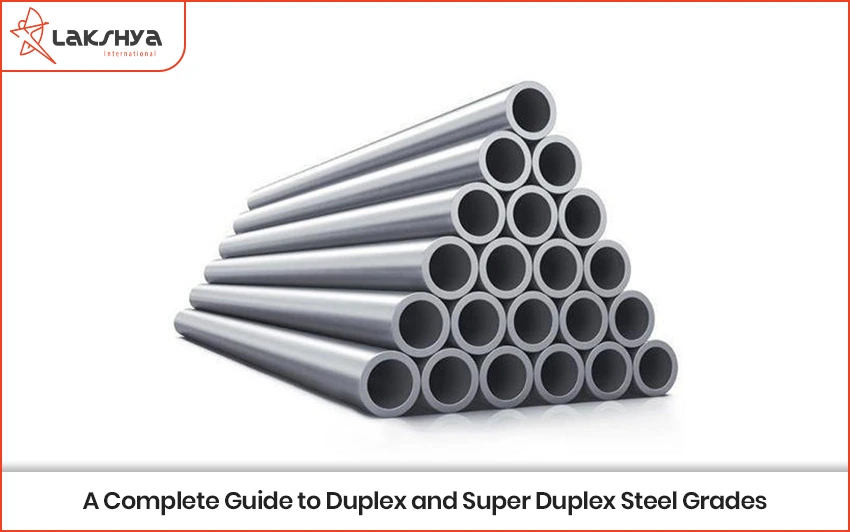Introduction
If you’ve ever wondered what the most widely used metal on the planet is, you might be shocked (or unsurprised) to learn that it’s steel. Steel is a durable material that is commonly utilised. Steel is used in many of the objects that you and I encounter with on a daily basis. Despite its widespread use and popularity, many people are unaware of steel’s varied qualities, subtleties, and applications. If that describes you, you’ll probably find some useful information in this blog.
THE HISTORY OF STEEL ALLOYS TODAY
Steel was created by extracting iron ore from the ground, smelting it in a furnace to eliminate impurities, and then adding carbon. Existing steel is recycled in today’s steel-making process. Steel is a mixture of iron and carbon that is mined from the Earth or recycled.
Steel can be reused and recycled indefinitely because it is a 100 percent recyclable material. The American Iron and Steel Institute claims that
“In the manufacturing of new steel, North American steelmaking furnaces consume almost 70 million tonnes of domestic steel scrap… The North American steel industry saves energy, pollution, raw materials, and natural resources by recycling steel scrap to manufacture new steel.”
Furthermore, there is no loss of quality or strength when steel is recycled.
STEEL GROUPS: STAINLESS, CARBON, TOOL, AND ALLOY
It’s easy to become overwhelmed when trying to comprehend steel for the first time. That’s largely due to the fact that steel is made up of four separate groups. You’ll find it easier to understand the information on steel if you know a little about these groups. Stainless steel, carbon steel, tool steel, and alloy steel are the four groups, which are separated by chemical composition.
STAINLESS STEEL
The corrosion resistance of stainless steel is the best of the four types. Stainless steel typically contains chromium, nickel, or molybdenum alloys, which account for 11-30% of the steel.
Need A Steel Enquire Now
Stainless steel is the most well-known of the four steel categories. Food handling, food processing, medical devices, hardware, and appliances all use it.
CARBON STEEL
The essential elements of iron and carbon are the same in both carbon steel and stainless steel, but the alloy content changes. The alloy percentage of carbon steel is less than 10.5 percent. Carbon steel is commonly divided into three subcategories: low carbon steel (0.03-0.15 percent carbon), medium carbon steel (0.25 percent -0.50 percent carbon), and high carbon steel (0.03-0.15 percent carbon) (0.55 percent -1.10 percent carbon).
Steel becomes harder and more difficult to bend or weld as the proportion of carbon increases. Low carbon steels are more often utilised because they have lower production costs, are more ductile, and are easier to work with in the manufacturing process. Low carbon steels bend more easily under stress, whereas high carbon steels are more prone to breaking under strain. Auto body panels, fasteners, fittings, seamless tubes, and steel plate are all made of low carbon steel.
TOOL STEEL
Carbon content in tool steels ranges between 0.5 and 1.5 percent. Tungsten, chromium, vanadium, and molybdenum are among the other additions used in tool steel. Tool steels are characterised by their hardness and ability to maintain a cutting edge at high temperatures. Tool steel is ideal for machining and tool manufacture because of this, as well as its resistance to wear and deformation.
ALLOY STEEL
Steel that fits into one of these four group classifications is classified as an alloy, but that’s not what I’m talking about right now. The terms “alloy steel” and “steel alloys” are not interchangeable. What exactly is alloy steel? Steel with roughly 5% alloying components in its composition is known as alloy steel. Manganese, chromium, vanadium, nickel, and tungsten are examples of alloying elements. Overall machinability and corrosion resistance improve with the inclusion of alloying elements.
Pipes, particularly pipes for energy-related uses, are most typically made of alloy steel. It’s also utilised in toasters, silverware, pots and pans, and corrosion-resistant containers as a heating element.
I hope you now have a better grasp of steel in general, as well as the four categories into which it is frequently divided: stainless steel, carbon steel, tool steel, and alloy steel. If you’re interested in learning more about stainless steel,
Read More :
What Are The Different Types Of Stainless Steel? Stainless steel is a silvery, gleaming metal that is commonly used in the kitchen. The metal is steel if there are reddish rust stains on it, Read more about different types.
The Benefits of Purchasing Steel from India The Indian steel market is one of the most competitive in the world. There are a lot of advantages to buying steel from India. Read More to know Why buying steel from India is beneficial.vantages of Buying Steel from India.
Grade 316 Stainless Steel: Everything You Need to Know This grade of steel is most widely used in surgical instruments, marine equipment, and aerospace parts, There are many grades of stainless steel and 316 is a popular grade. Read more to know everything.
Grade 304 Stainless Steel: Everything You Need to Know 304 Stainless Steel, also known as 304, is a type of steel that is widely used in the manufacturing of many different types of appliances and durable goods, Read more to know further.




